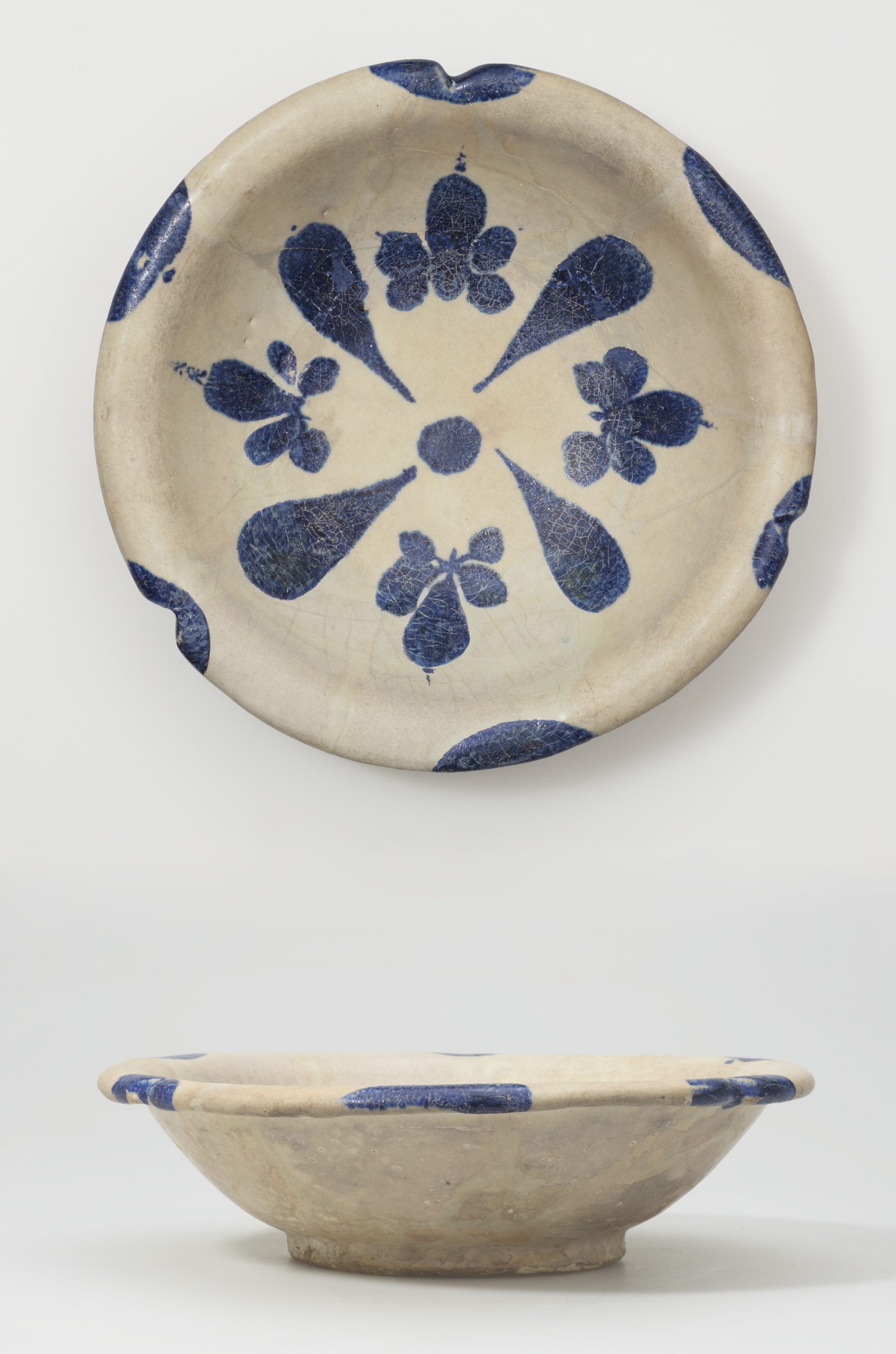 Print Page
Print Page
 Print Page
Print Page
Location: Iraq
Materials: earthenware, with an opaque white glaze, decorated with in-glaze cobalt staining
Dimensions: 5.6 x 20.9cm
Accession Number: POT 1578
Other Notes:
Although the bowl conforms to the standard Abbasid type from Iraq, it differs from others in the group in the character of its potting: it is thicker, heavier and has a bevelled footring which is completely covered with glaze. It is also distinguished by its rigorously balanced design which radiates from a central dot.
It is now generally agreed that the catalyst for the transformation of pottery from a domestic craft into a mass production industry in Mesopotamia under the Abbasids came from China: in particular, from the Tang stonewares which were beginning to reach the Middle East by the early 9th century. Although Islamic kiln technology could not reproduce the hard bodies of Chinese stoneware, Islamic potters discovered that glazes could be opacified with tin oxide to produce a visual approximation and could be stained with other metallic oxides to imitate their polychrome decoration.
Bibliography:
E.J. Grube et al, Cobalt and Lustre. The First Centuries of Islamic Pottery, The Nasser D Khalili Collection of Islamic Art, volume IX, London 1994, cat.24, pp.32–3 and 36.
J.M. Rogers, The Arts of Islam. Masterpieces from the Khalili Collection, London 2010, cat.26, p.48.
